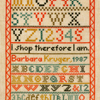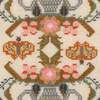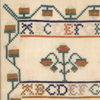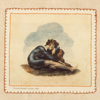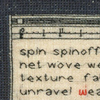When This You See . . . 1994–99 Click on images to view project. |
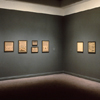 |
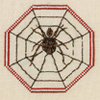 |
 |
 |
|||||
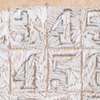 |
 |
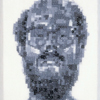 |
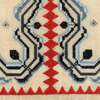 |
|||||
 |
 |
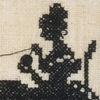 |
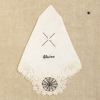 |
|||||
 |
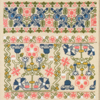 |
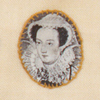 |
 |
|||||
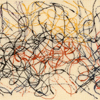 |
 |
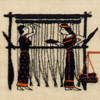 |
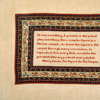 |
|||||
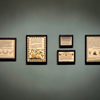 |
 |
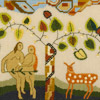 |
 |
|||||
 |
 |
 |
 |
|||||
When This You See . . . deals with the history of knitting, sewing, and weaving and the ways these activities have been understood over time. It is realized in the medium it explores: the heart of this body of work is a group of thirty-one embroidered samplers—this is the project in which samplers became central to my practice. In place of the homilies and lessons that samplers traditionally convey, I appropriated quotations from literature and art history, ranging in time from Classical Greece and Rome to the American modernist painting of the twentieth century. The samplers also feature visual quotations. Many of them are based on or adapted from older designs, and there are frequent borrowings from art history. Imagery of weaving, sewing, and knitting is deeply embedded in linguistic structures and powerfully wedded to ideas about gender. My selections and juxtapositions seek to bring an alternative, gendered history into view and to comment on the traditional history of modern art.
Sampler (Starting Over) quotes Penelope of Homer’s Odyssey, who weaves a tapestry every day then undoes it at night in a process of creation that is both never-ending and always beginning again. It also quotes Ad Reinhardt on the same process of constantly beginning, and its design combines an image of weavers from a Greek urn with Reinhardt’s signature black rectangles. The next work, ordered chronologically by subject, is Sampler (Ovid’s Weavers), based on stories in Ovid’s Metamorphoses—of Arachne, the weaver artist who is rewarded for her willfulness and ambition by being turned into a spider, and of Philomela, who is raped and in seeking justice gives herself voice by weaving a message recounting the crime. Samplers touching on later periods include works based on a drawing by Georges Seurat of his mother sewing and on Nathaniel Hawthorne’s character Hester Prynne, whose embroidered scarlet letter is a mark of social stigma but whose sewing practice makes her an artist figure as well. Other samplers quote Freud, Adolf Loos, Colette, Beatrix Potter, Anni Albers, Robert Ryman, Barabara Kruger, and Jenny Holzer, among others. The final piece, Sampler (World Wide Web), fuses a compendium of fabric-related words and figures of speech—“embroidering the truth,” “spinning a tale,” and so on—with imagery and terminology from the world of computers.
In its original exhibition at The Museum of Modern Art, New York, and in subsequent venues, When This You See . . . has been hung in a room painted in a dark, rich “library green,” a color that connotes both the museum and the domestic space.
|
